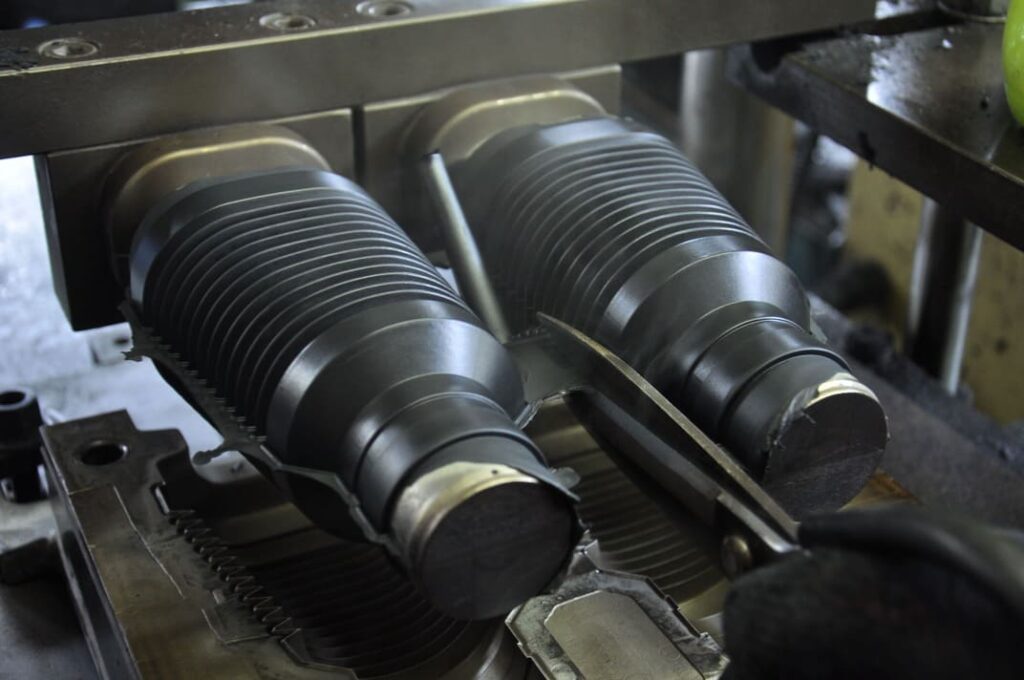Rubber sleeves and rubber bellows are both flexible components used in various industrial applications, but they serve different purposes and are designed differently. So, what sets these two rubber products apart?
Rubber sleeves are primarily used to cover and protect items like wires and cables, while rubber bellows are designed to protect mechanical components from environmental factors, accommodate movement, and absorb vibrations.

While both serve protective functions, the key differences lie in their design, flexibility, and specific applications. Let’s dive deeper into the distinctions between rubber sleeves and rubber bellows, and how each can be used effectively in different industrial contexts.
What is a Rubber Sleeve?
A rubber sleeve is a flexible, tubular cover made from rubber, often used to protect wires, cables, or other components from abrasion, moisture, and contaminants. Rubber sleeves1 are typically smooth and fit snugly around the protected item.
Rubber sleeves are primarily used for protection, insulation, and sealing purposes, offering a simple yet effective way to safeguard cables or other sensitive components.
Key Features of Rubber Sleeves
- Protection: Rubber sleeves protect against abrasion, moisture, and chemicals.
- Insulation: Often used for electrical insulation, particularly for wires and cables.
- Flexible Fit: Easily slide over components, offering a snug, protective cover.
- Variety of Sizes: Rubber sleeves come in different sizes and thicknesses depending on the application.
Rubber sleeves are commonly used in electrical systems, automotive applications, and machinery, where they protect wires and cables from environmental damage. They help prevent short circuits, reduce wear and tear, and ensure safety in high-temperature or high-pressure environments.
What is a Rubber Bellow?
A rubber bellow, on the other hand, is a flexible, accordion-like component typically used to cover mechanical parts such as shafts, pistons, and rods. Rubber bellows are designed to absorb movement, accommodate expansion or contraction, and protect parts from contaminants like dust, moisture, and chemicals.
Rubber bellows are primarily used in machinery and mechanical systems to protect moving parts, prevent contaminants, and absorb vibrations or movement.

Key Features of Rubber Sleeves
- Protection: Rubber sleeves protect against abrasion, moisture, and chemicals.
- Insulation: Often used for electrical insulation, particularly for wires and cables.
- Flexible Fit: Easily slide over components, offering a snug, protective cover.
- Variety of Sizes: Rubber sleeves come in different sizes and thicknesses depending on the application.
Rubber sleeves are commonly used in electrical systems, automotive applications, and machinery, where they protect wires and cables from environmental damage. They help prevent short circuits, reduce wear and tear, and ensure safety in high-temperature or high-pressure environments.
What is a Rubber Bellow?
A rubber bellow, on the other hand, is a flexible, accordion-like component typically used to cover mechanical parts such as shafts, pistons, and rods. Rubber bellows are designed to absorb movement, accommodate expansion or contraction, and protect parts from contaminants like dust, moisture, and chemicals.
Rubber bellows are primarily used in machinery and mechanical systems to protect moving parts, prevent contaminants, and absorb vibrations or movement.
Key Features of Rubber Bellows
- Movement Accommodation: Rubber bellows can expand and contract, absorbing mechanical movement.
- Protection Against Contaminants: They shield sensitive components from dust, debris, and moisture.
- Vibration Dampening: Rubber bellows help reduce noise and vibration in machinery.
- Variety of Shapes: They come in cylindrical, conical, or custom shapes based on the application.
Rubber bellows are commonly used in automotive, industrial, and HVAC applications. They are especially useful in systems with moving parts that need to be shielded from external contaminants or where movement needs to be accommodated without damaging the components.
What is the Difference Between Rubber Sleeves and Rubber Bellows2?
The primary difference between rubber sleeves and rubber bellows lies in their function and design. While both are flexible and provide protection, they are designed for different purposes.
Rubber sleeves are designed for covering and protecting items like wires and cables, whereas rubber bellows are used to protect mechanical parts and accommodate movement in machinery.
Rubber Sleeve vs Rubber Bellow: Key Differences
| Feature | Rubber Sleeve | Rubber Bellow |
|---|---|---|
| Primary Use | Protection and insulation for wires, cables | Protection and movement accommodation for mechanical parts |
| Design | Smooth, tubular cover | Accordion-like, flexible component |
| Flexibility | Less flexible, designed for snug fit | Highly flexible, designed for movement |
| Applications | Electrical systems, automotive, machinery | Automotive, industrial machinery, HVAC |
| Protection | Protects against abrasion, moisture, chemicals | Protects against dust, moisture, accommodates movement |
While both components offer protection, rubber bellows are more flexible and suited for applications where movement and vibration absorption are essential. Rubber sleeves, on the other hand, are better suited for covering and insulating components like cables or wires.
Conclusion
Rubber sleeves and rubber bellows are both essential in various industrial applications, offering protection in different ways. Understanding the key differences between them helps in choosing the right product for your needs.







